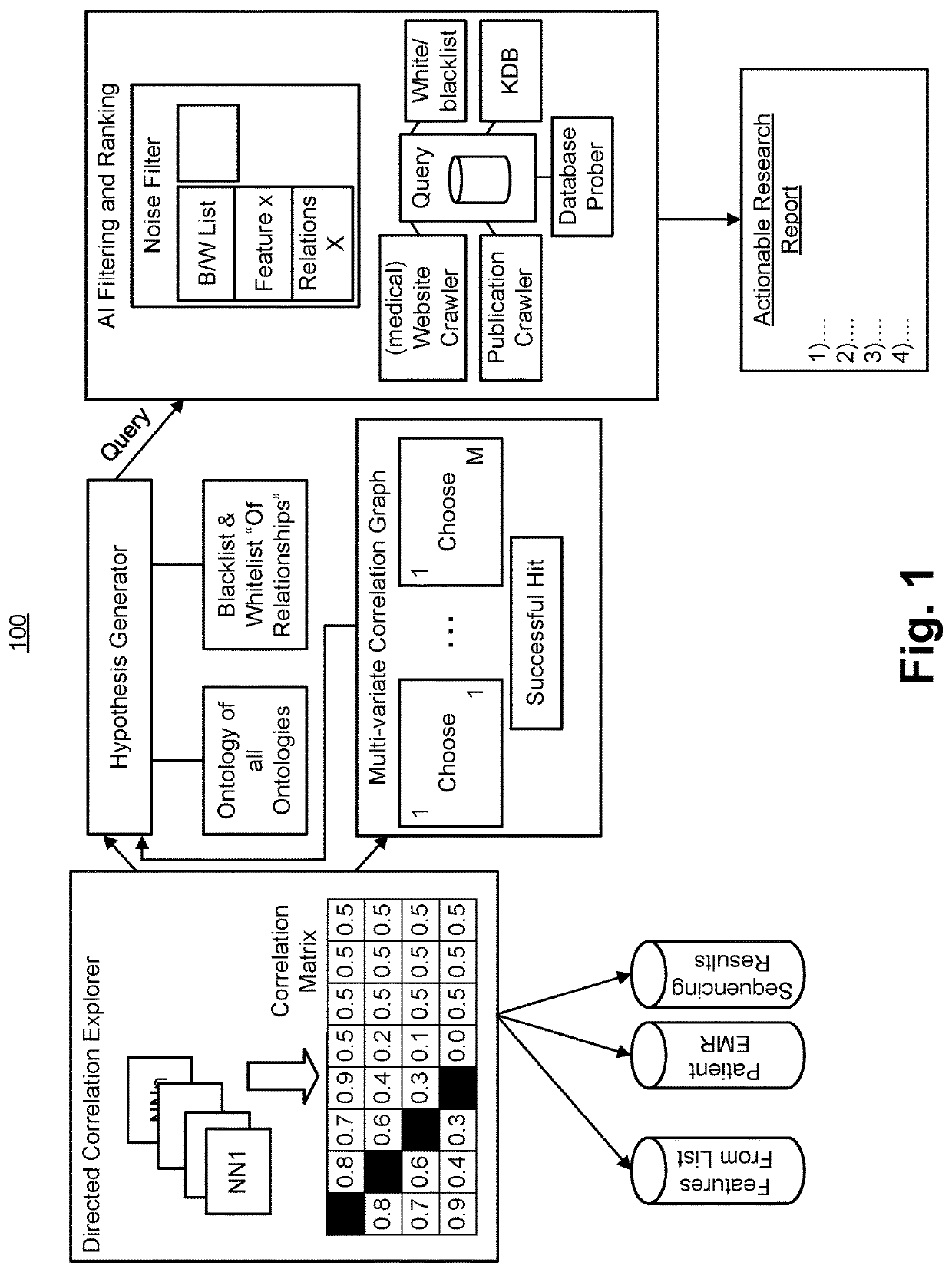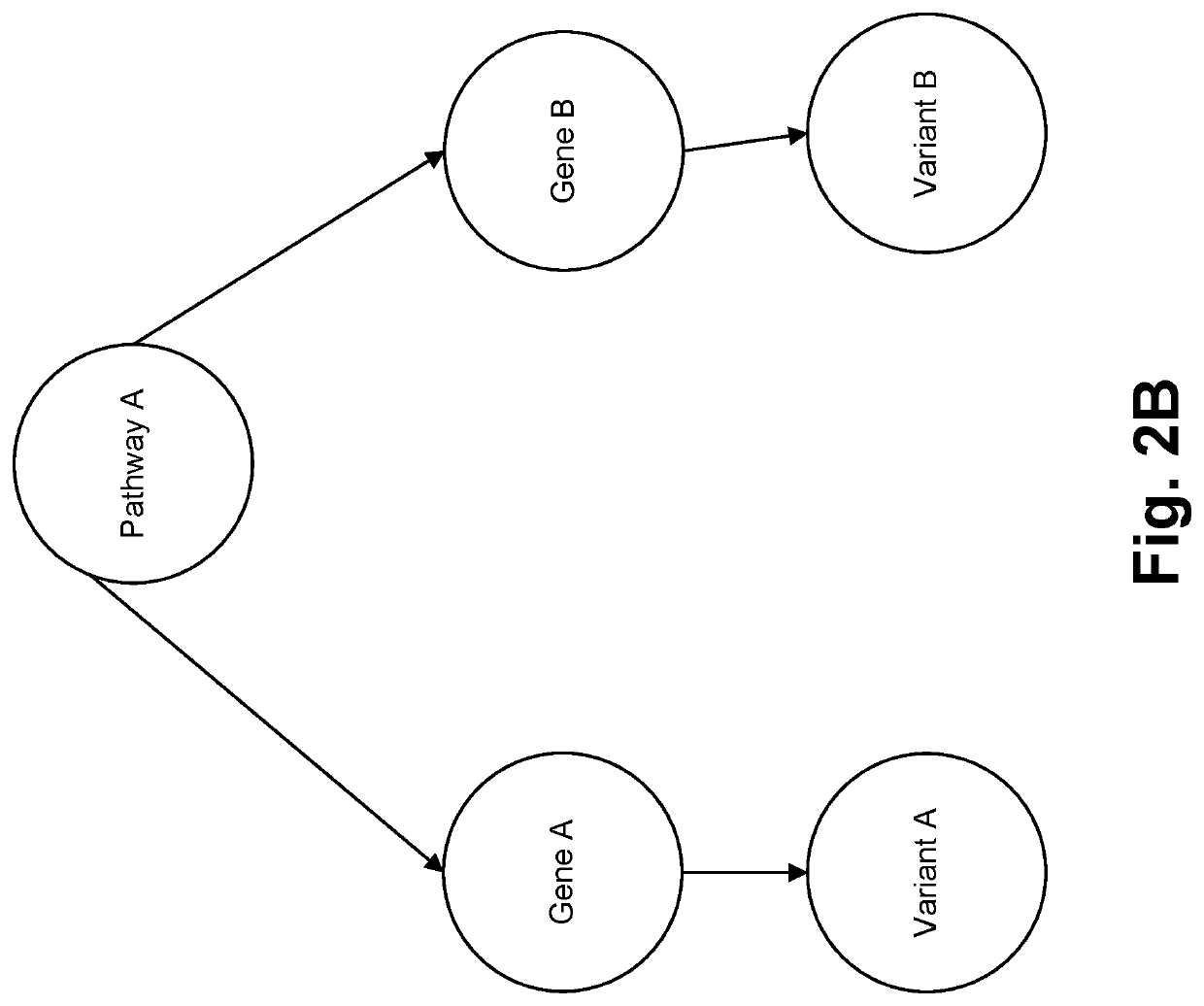Artificial intelligence engine for directed hypothesis generation and ranking
a technology of artificial intelligence and directed hypothesis, applied in the field of artificial intelligence engine for directed hypothesis generation and ranking, can solve the problems of increasing the “greater-than-exponential” rise, unintended undiscovered public knowledge, and often neglected relationship between different pieces of published evidence, etc., and achieve the effect of improving the quality of hypothesis over tim
- Summary
- Abstract
- Description
- Claims
- Application Information
AI Technical Summary
Benefits of technology
Problems solved by technology
Method used
Image
Examples
embodiments
General Architecture
I. Heterogeneous Knowledge Graph Integrating Multi-Omic Data
[0042]In accordance with various embodiments, the proposed method is provided for ingressing domain-specific entities into a domain specific knowledge-graph. Furthermore, the proposed method constructs a directed labeled multi-relational patient-centric knowledge graph / knowledge base that represents semantics of the domain. FIG. 2A illustrates an exemplary multi-omic knowledge graph. Entities are identified via dictionaries (e.g. existing domain ontologies for clinico-genomic entities) and further normalization may be performed. Each entity refers to a unique object in the physical world (e.g. patient, gene, variant, signaling pathway, drug, therapy, outcome, imaging test [pathology findings, radiology findings, histogenomic findings], genomic test, etc.). Non-limiting examples of genomic data are single nucleotide variations, indels in tumor and normal, structural rearrangements, copy number variants, g...
PUM
 Login to View More
Login to View More Abstract
Description
Claims
Application Information
 Login to View More
Login to View More - R&D
- Intellectual Property
- Life Sciences
- Materials
- Tech Scout
- Unparalleled Data Quality
- Higher Quality Content
- 60% Fewer Hallucinations
Browse by: Latest US Patents, China's latest patents, Technical Efficacy Thesaurus, Application Domain, Technology Topic, Popular Technical Reports.
© 2025 PatSnap. All rights reserved.Legal|Privacy policy|Modern Slavery Act Transparency Statement|Sitemap|About US| Contact US: help@patsnap.com



